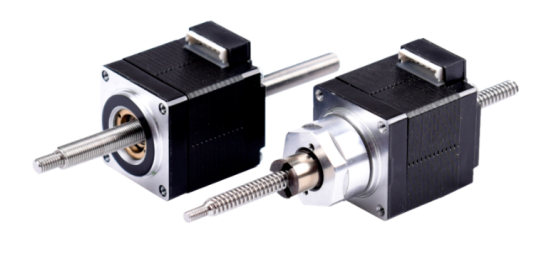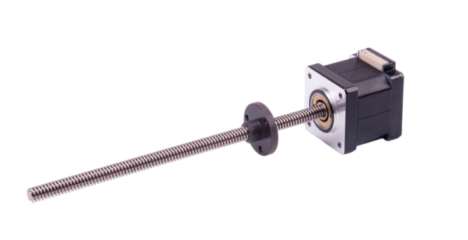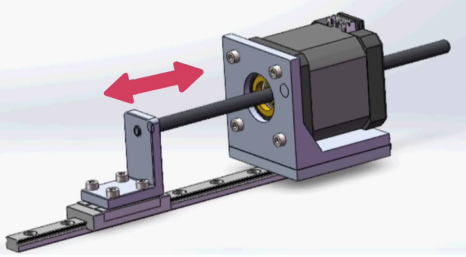The principle of the screw stepper motor: a screw and nut are used to engage, and a fixed nut is taken to prevent the screw and nut from rotating relative to each other, thus allowing the screw to move axially. In general, there are two ways to realize this transformation.
The first is to build a rotor with internal threads into the motor, and to realize linear motion by engaging the internal threads of the rotor and the screw, which is called penetrating screw stepping motor. (The nut is integrated with the motor rotor and the screw shaft passes through the center of the motor rotor. When in use, fix the screw and do anti-rotation, when the motor is powered up and the rotor rotates, the motor will move linearly along the screw. (On the contrary, if the motor is fixed while the screw is made anti-rotation, then the screw will do linear motion)

Through-axis Type
The second is to take the screw as the motor out shaft, in the motor external through an external drive nut and screw engagement so as to realize linear movement, this is the external drive type screw stepping motor. The result is a greatly simplified design that enables precision linear motion in many applications to be performed directly with a screw stepper motor without the installation of an external mechanical linkage. (The nut is external to the motor and is coupled to the drive mechanism. When the motor rotates, the nut moves linearly along the screw.)

External Drive Type
Application advantages of through-axis linear stepping motor:
Comparing the application scenarios where externally driven linear stepper motors are used in conjunction with linear guideways, through-axis linear stepper motors have their own unique advantages, which are mainly reflected in the following 3 aspects:
1.Allows greater system installation error:
In general, if an externally driven linear stepper motor is used, poor parallelism between the screw and guideway mounting is likely to lead to system stalling. However, with through-axis linear stepper motors, this fatal problem can be greatly ameliorated because of the structural characteristics of the design, which allow for greater system error.

When the motor is energized, the nut rotates with the rotor and the screw is connected to an external load and moves in a straight line along the guide.
2.Not limited by the critical speed of the screw:
When externally driven linear stepper motors are selected for high-speed linear motion, they are usually limited by the critical speed of the screw. However, with a through-axis linear stepper motor, the screw is fixed and anti-rotation, allowing the motor to drive the slider of the linear guideway. Since the screw is stationary, it is not limited by the critical speed of the screw when realizing high speed.
3.This saves installation space:
The through-axis linear stepping motor does not take up additional space beyond the length of the screw due to the structural design where the nut is built into the motor. Multiple motors can be mounted on the same screw. The motors cannot “pass through” each other, but their movements are independent of each other. Therefore, it is a suitable choice for applications with more stringent space requirements.
For more information, please contact us at amanda@kgg-robot.com or +WA 0086 15221578410.
Post time: Feb-11-2025






